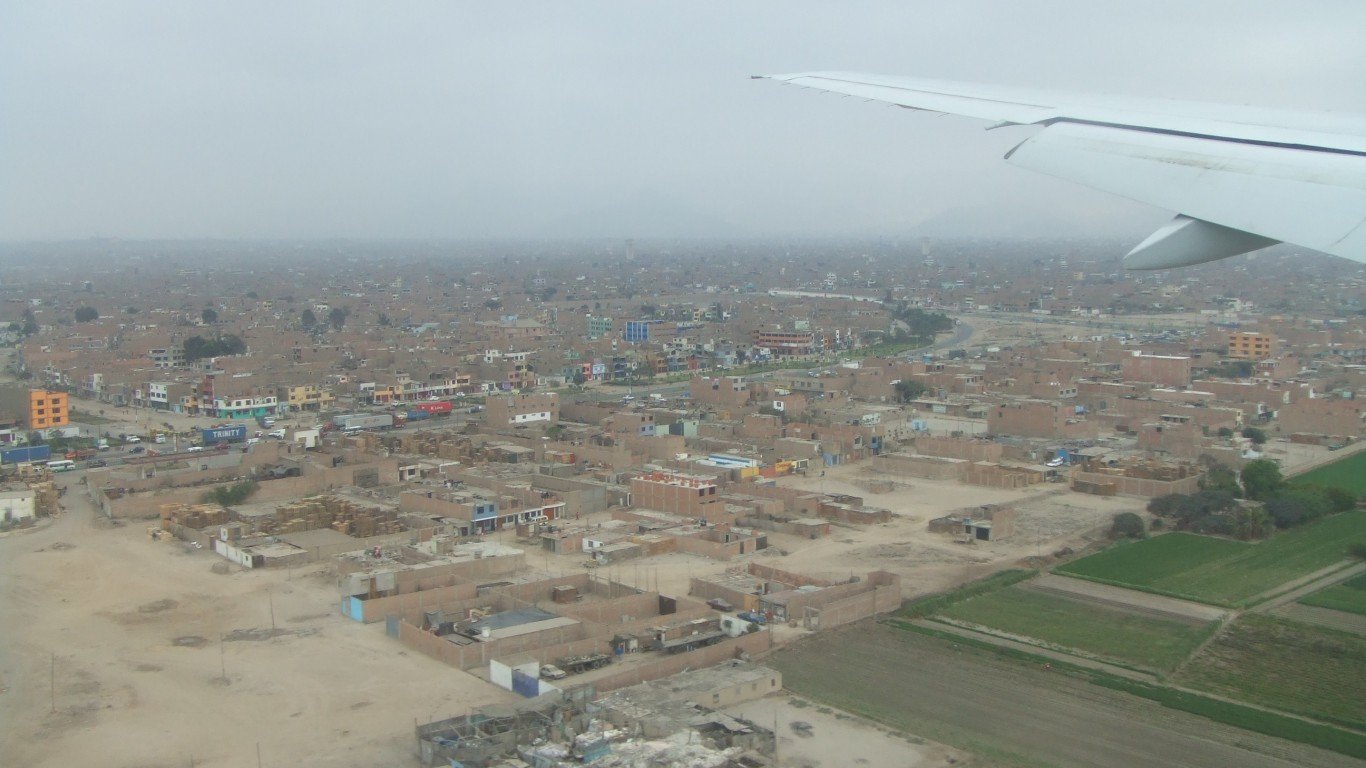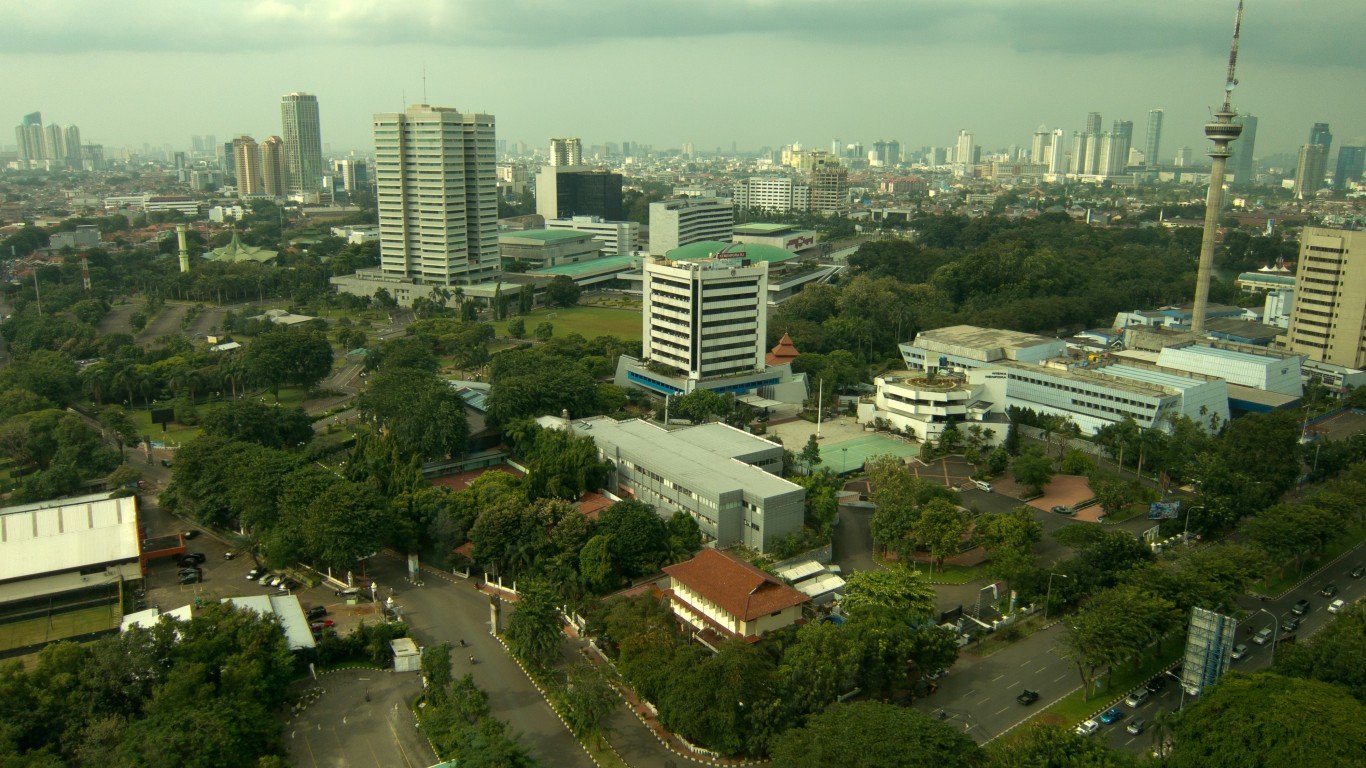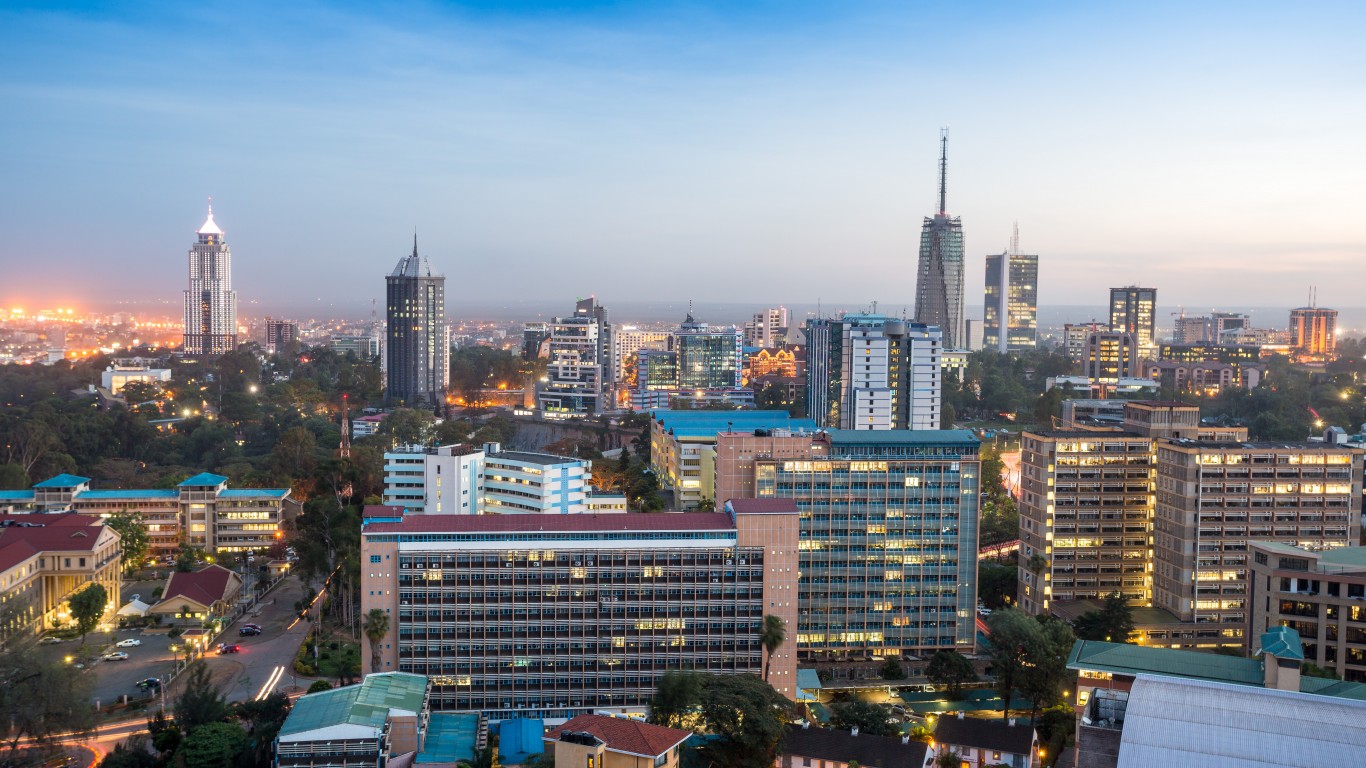
20. Nairobi, Kenya
> Est. population, 2050: 10.4 million, 101% growth from 2022
> Ecological threat level: 5 – Extremely High
> Air quality: 2 – Unhealthy for Sensitive Groups
> Expected climate changes: Drier
> Global peace index (1-5, most to least): 2.79 – Very Low Peace
> Estimated GDP in 2020: $20 billion
Unplanned settlements caused by rapid urbanization and a high degree of poverty makes the Kenyan capital city one of six African megacities on this list most at risk of being unable to deal with profound ecological threats.
Not yet a megacity but projected to be one by 2050, Nairobi has a small population relative to other threatened cities on the continent, namely Lagos and Kinshasa. However, Nairobi’s rapid population growth is outpacing its ability to meet developmental demands, leading to ever-larger unplanned settlements that consume natural areas and generate large amounts of untreated solid waste. As with all of the megacities on this list, an explosion in the number of vehicles is leading to high levels of air pollution.
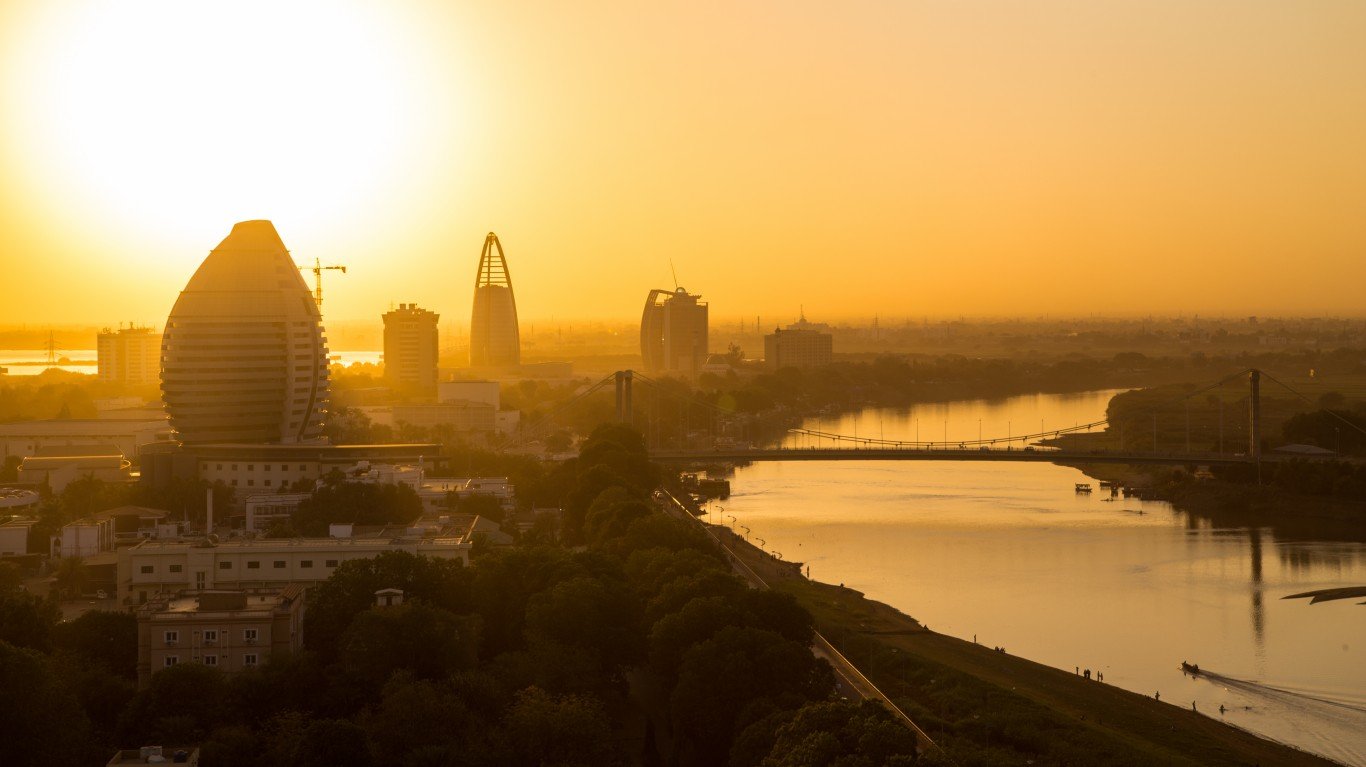
19. Khartoum, Sudan
> Est. population, 2050: 11.2 million, 80% growth from 2022
> Ecological threat level: 5 – Extremely High
> Air quality: 3 – Unhealthy
> Expected climate changes: Hotter, Drier
> Global peace index (1-5, most to least): 3.42 – Very Low Peace
> Estimated GDP in 2020: $51 billion
A 2020 ranking by Notre Dame University’s Global Adaptation Index ranked Sudan as the world’s fifth most vulnerable country to climate change. The arid East African country is hit regularly with intense drought, high temperatures, and torrential rains that cause fast desert flooding.
Civil conflicts over limited land and water resources abound. The country’s capital, centrally situated on the White Nile river, is choked by poor air quality caused by rapid urbanization and a growing fleet of vehicles. The urban area faces serious challenges in solid waste management, too. (Khartoum is not a megacity yet, but is projected to reach that status by 2050.)
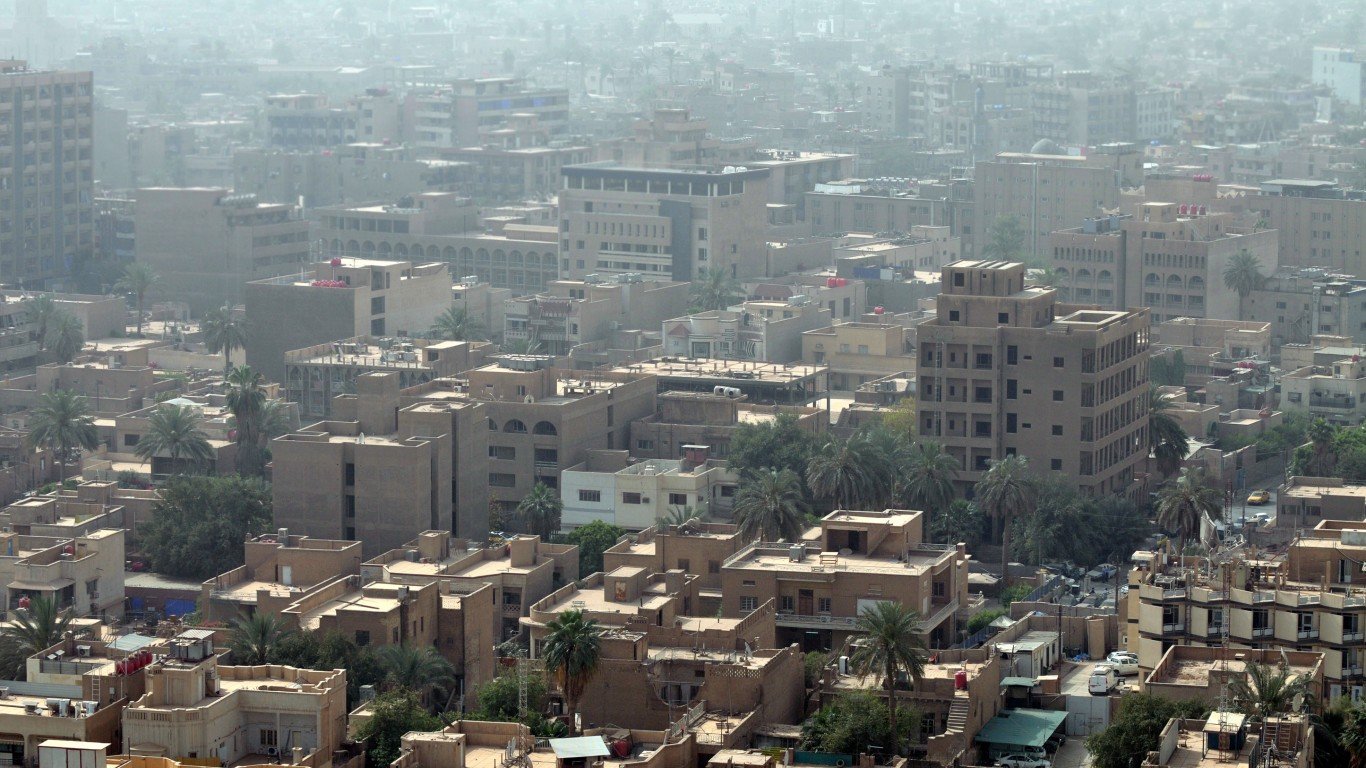
18. Baghdad, Iraq
> Est. population, 2050: 13.0 million, 71% growth from 2022
> Ecological threat level: 5 – Extremely High
> Air quality: 2 – Unhealthy for Sensitive Groups
> Expected climate changes: Hotter, Wetter
> Global peace index (1-5, most to least): 3.79 – Very Low Peace
> Estimated GDP in 2020: $39 billion
Water contamination, soil salinization, and the waste produced by years of armed conflict – including but not limited to the U.S. war in Iraq – is wreaking ecological havoc on the country’s capital city as well as the country as a whole.
Air pollution, long caused in part by natural sand storms, is worsened by the city’s growing population and vehicle traffic. Temperatures are rising faster than the global average in Iraq, causing changes to annual rainfall, and testing the limits of Baghdad’s water supply between deluges. (Baghdad is not a megacity yet, but is projected to reach that status by 2050.)
17. Lima, Peru
> Est. population, 2050: 13.4 million, 21% growth from 2022
> Ecological threat level: 5 – Extremely High
> Air quality: 3 – Unhealthy
> Expected climate changes: Hotter, drier
> Global peace index (1-5, most to least): 2.49 – Low Peace
> Estimated GDP in 2020: $123 billion
The arid coastal capital of Peru joins São Paulo and Mexico City as Latin America’s three megacities ranked among the world’s 20 most at risk cities. It routinely has poorer air quality than the other two thanks to the massive amount of traffic.
Drinking water shortages are common, and they are expected to increase as the city gets drier because of global warming. Already, about 1.5 million residents of Metropolitan Lima lack daily access to piped drinking water and sewage.
16. Jakarta, Indonesia
> Est. population, 2050: 14.2 million, 28% growth from 2022
> Ecological threat level: 5 – Extremely High
> Air quality: 5 – Hazardous
> Expected climate changes: Wetter
> Global peace index (1-5, most to least): 2.07 – High Peace
> Estimated GDP in 2020: $253 billion
Indonesia’s enormous capital city rests on a delta just above sea level, and often many of its thrash-filled canals rise high enough to touch or top bridges. With 40% of the city already below sea level, Jakarta’s frequent floods are expected to become worse and more frequent. North Jakarta is sinking by 4.9 centimeters per annum.
Fewer than half of city residents have access to piped water as the city never caught up to the rapid urbanization that began in the ’60s and ’70s. As with other megacities in the Global South, Jakarta’s streets are choked with traffic, exacerbating poor air quality. Despite having a high peace level, it is the high ecological threats that place Jakarta among most at risk cities.
